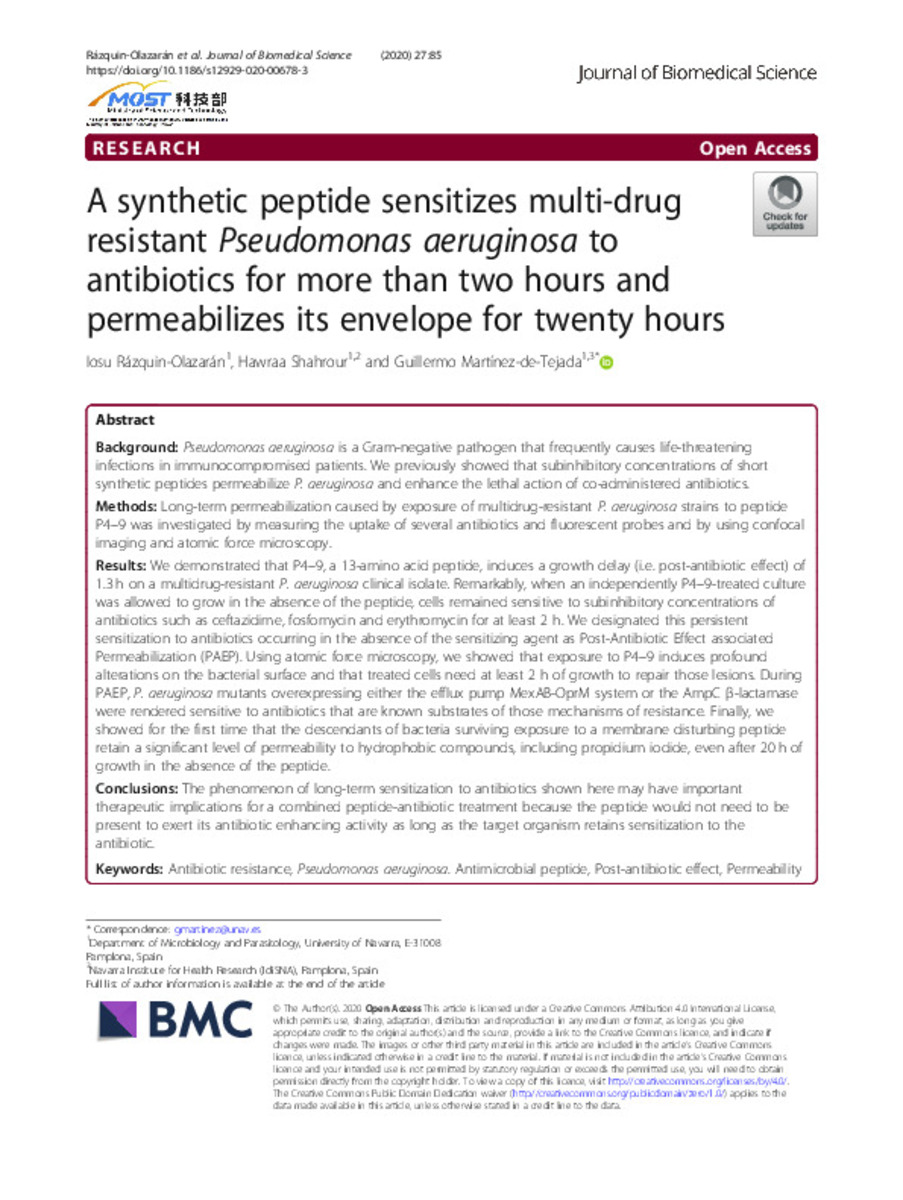A synthetic peptide sensitizes multi-drug resistant pseudomonas aeruginosa to antibiotics for more than two hours and permeabilizes its envelope for twenty hours
Keywords:
Antibiotic resistance
Pseudomonas aeruginosa
Antimicrobial peptide
Post-antibiotic effect
Permeability
Project:
FIS-PI050768
PIUNA-P2008–11
PIUNA-P2011– 17
Note:
This article is licensed under a Creative Commons Attribution 4.0 International License
Citation:
Razquin-Olazaran, I. (Iosu); Shahrour, H. (Hawraa); Martinez-de-Tejada, G. (Guillermo). "A synthetic peptide sensitizes multi-drug resistant pseudomonas aeruginosa to antibiotics for more than two hours and permeabilizes its envelope for twenty hours". Journal of Biomedical Science. 27:85, 2020,
Statistics and impact
0 citas en

0 citas en

Items in Dadun are protected by copyright, with all rights reserved, unless otherwise indicated.







